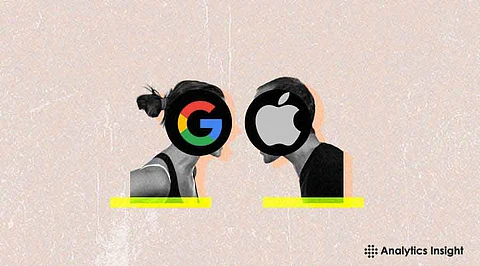

The competition between Google and Apple in the advertising sector is heating up, with both tech giants pursuing new strategies and technologies to expand their influence. As the landscape evolves, each company moves boldly to capture market share, reshaping how advertisers and consumers engage with digital platforms.
Recent developments suggest that Apple is poised to significantly grow its advertising footprint. Internal documents from Google revealed during an ongoing antitrust case that Apple could develop a $30 billion advertising business beyond its current App Store search ads.
While Apple’s advertising endeavors have traditionally been limited, speculation indicates that the company may expand into selling ads on third-party apps and through its Safari web browser. If realized, such a move would mark a major shift in Apple’s strategy, enabling it to compete more directly with Google across broader advertising channels.
Google’s revenue from its agreement to be the default search engine on Apple devices underscores the financial interdependence between the two companies. The deal reportedly generates over $20 billion annually for Google, constituting a significant portion of Apple’s profits as well.
This arrangement, however, faces scrutiny under the U.S. Department of Justice’s investigation into Google’s market practices. The probe seeks to understand the implications of this partnership on competition and consumer choice, potentially reshaping how these collaborations function in the future.
A comparison of Google Ads and Apple Search Ads reveals stark differences in their capabilities and market dynamics. Google Ads, known for its extensive reach across platforms like YouTube, Gmail, and the Google Search Network, offers advertisers a broad audience and cost-effective pricing.
In contrast, Apple Search Ads operate narrowly, focusing primarily on targeted marketing within the App Store. While Apple’s platform offers advanced targeting features, such as ad placements tied to specific search terms, its cost structure often proves less appealing. For example, the cost per installation on Apple Search Ads is frequently higher than that on Google Ads, limiting its attractiveness to certain advertisers.
The disparity in market share between the two platforms underscores Google’s dominance in digital advertising. Google Ads commands a substantial portion of the search marketing sector, leveraging its global presence and ecosystem integration.
Apple Search Ads, by comparison, maintains a much smaller footprint, which reflects its focus on the niche market of App Store users. Despite Apple’s smaller reach, its advertising strategies cater to a premium audience segment, particularly iOS users who are more inclined to spend money on apps and services.
Apple’s efforts to expand its advertising business are evident in its hiring practices. The company has been recruiting advertising professionals, including talent from Google, to enhance its capabilities.
These hires signal Apple’s commitment to building a competitive advertising infrastructure. By attracting experienced professionals, Apple is equipping itself to challenge Google’s dominance and innovate in areas such as ad delivery and user engagement.
The precision of ad targeting is a key difference between Apple and Google. Apple Search Ads allow advertisers to specify search terms that trigger their ads, providing a level of customization that appeals to niche markets.
On the other hand, Google Ads benefits from its expansive user base and broad targeting options, enabling advertisers to achieve significant impressions at competitive costs.
Consumer behavior further influences the appeal of each platform. Android users, for instance, are more likely to download apps frequently, whereas iOS users are known for their willingness to spend on apps and in-app purchases. This behavioral distinction plays a critical role in shaping advertising strategies, as brands tailor their campaigns to align with platform-specific user habits.
However, the advertising industry battle will likely escalate as Apple and Google expand and invent better ways. More broadly, if Apple expands significantly into other advertising markets, it can certainly unseat Google if it builds out its position as the privacy-respected service that consumers trust.
Google still depends on establishing a more robust advertising environment while utilizing other emerging technologies, such as AI, to create relevant and highly effective advertising for its clients.
This is the case with advertisers as they try to survive and thrive in this always-changing environment. The selection between the platforms will further be based on the goals and objectives of the campaigns, the target audiences of the program, and the affordability of the same.
The competition between Google and Apple in the advertising field is clearly illustrative of general trends in technologies and customers. Google’s internet presence, economies of scale, pedagogy, and affordable costs make it incumbent today. At the same time, Apple, with partial generalization, has the disruptive challenger characteristics of focusing on the top-end users.
While both pursue new paths for growth, the advertising industry is poised for a change that will redefine how brands communicate with consumers and how consumers, in turn, engage with content. Only the constant trend of companies fighting for market share will dictate the future of digital advertising, impacting business ventures and users globally.
